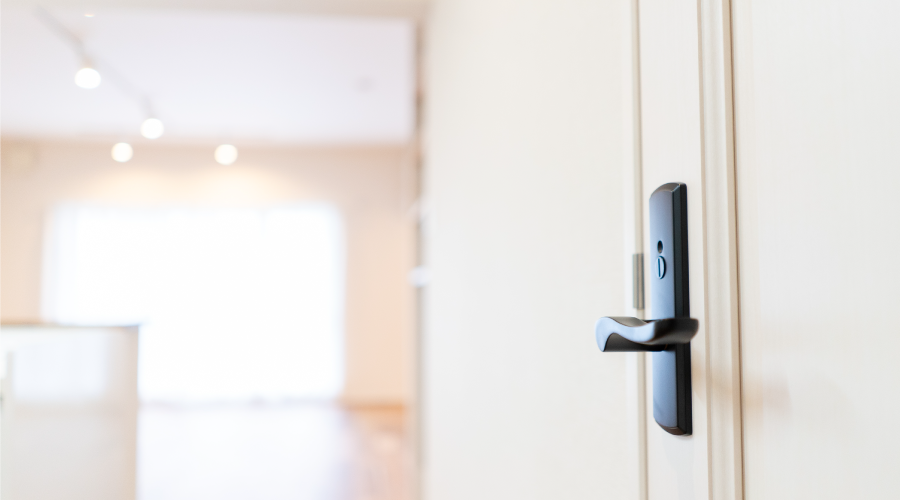Door Hardware: Check Load Capacity, Cycle Frequency
One important consideration when specifying door hardware is making sure the hardware's load capacity and cycle frequency match the door's size and weight, as well as its frequency of use. Managers might be tempted to specify lower-cost hardware by going to a ANSI Grade 3, light-duty product when an ANSI Grade 1, heavy-duty unit is needed. The light-duty part will cost less, but it inevitably will result in lower reliability, more frequent repair and replacement, and higher costs in the long run, not to mention greater occupant dissatisfaction.
Managers should keep current codes and standards on hand. When specifying door hardware for optimum access and security, these resources help match a product's rated number of cycles and robustness with the intended application.
Door hand also is a key part of the specification process. To determine a door's hand, the installer stands with his or her back against the hinges. If the door swings open toward the installer's left hand, it is a left-handed door. If it swings toward the right hand, it is right-handed.
Managers also can specify reverse left- and right-handed doors, so they should check with the supplier first when replacing doors or hardware before specifying the door's hand.
Once the door hand is determined, the manager can match it with the lever handle, which can be left or right. Other important factors are weight and size, especially when selecting closers, operators, and hinges. For commercial use, ANSI Grade 1 products will stand up to the highest number of cycles. Managers also need to consider ADA compliance.
Managers also should communicate with the vendor to learn about the full range of capabilities of the available products and services, including accessories. For example, commercial electronic door operators are rated light, medium, and heavy, depending on the door size and cycles per hour.
They might have non-standard features, such as timer-to-close functions and auto-reversing if an obstruction stops the door. The timer-to-close function is particularly useful for lift-truck traffic, since the driver can concentrate on the area ahead in often crowded loading docks and warehouses without becoming distracted by closing the door after entering.
Related Topics:














